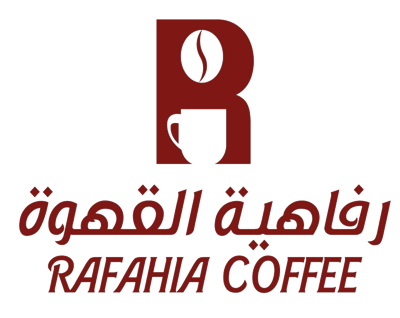If you're a coffee lover, you've probably noticed this enchanting contrast in flavors whenever you buy coffee from a different roaster. Sometimes you enjoy berry and floral notes, and other times you're surprised by a light acidity with a hint of dark chocolate. These differences aren't a coincidence; they're the result of a long series of careful decisions made by each roaster, from the selection of coffee beans to the roasting methods and flavor philosophy they adopt. In this article, we take you behind the scenes to understand the real reasons why coffee flavors differ from one roaster to another. We'll explore the influencing factors such as the coffee's source, the degree of roasting, the roaster's experience, and the equipment used, in addition to the influence of general taste and the culture of each roaster.
Why do coffee flavors differ from one roaster to another?
Coffee flavors vary significantly from one roaster to another. Some may think this is due solely to the type of bean, but it's actually the result of a series of subtle factors that go into every stage of coffee production. Here are the stages in detail:
Origin of coffee beans
The region the grain comes from directly affects the taste.
- Coffee from Ethiopia tends to have fruity and floral flavors.
- Coffee from Colombia is often balanced with a pleasant acidity and sugariness.
- Coffee from Brazil gives nutty and chocolate flavors.
Each roaster chooses beans that reflect their own vision and approach, so you'll notice a difference in flavor once the source changes.
2. Post-harvest processing method
Processing refers to how the grain is cleaned and dried after it is picked.
- Washed processing: Produces coffee with a clean, acidic flavor.
- Natural processing: gives fruity and sweet flavors.
- Honey Treatment: A balance between sweetness and depth.
Each roaster prefers a specific type of processing depending on the result they want to deliver.
3. Roasting Profile
Roasting is the heart of the process, and each roaster develops its own “signature” through it:
- Light roasting highlights fruit flavors and acidity.
- Medium roast gives a balance between sweetness and bitterness.
- Dark roasting reveals flavors of caramel, cocoa, and smoke.
A slight difference in roasting degree or roasting time can significantly change the flavor.
4. Roaster's experience and roaster's philosophy
Some roasters aim to offer adventurous coffee with a bold, unique taste, while others focus on a smooth, classic taste.
An expert roaster knows how to “bring out the best in the bean,” adjusting the roast curve to highlight specific flavors without burning the natural oils or losing balance.
5. Packaging, storage, and duration of roasting time
Even after roasting, there are additional factors that affect the flavor:
- Degassing: Coffee needs a few days to reach its ideal flavor.
- Packaging Method and Roasting Date: Fresh coffee always has a richer flavor.
- Some roasters pay attention to the smallest details in storage and packaging, which maintains quality.
6. The roaster's orientation and the taste of its audience
Specialty roasters that appeal to local consumer tastes. For example,
- In the Gulf, some prefer coffee with a mild, oriental flavour.
- In Europe, roasters tend toward fruity flavors and high acidity.
Understanding public taste helps roasters design flavors that will please their audience, and these are considered decisions that impact the final product.
The most prominent roasted coffee flavors
The flavors of roasted coffee vary greatly depending on the type of bean, processing method, and roasting degree. However, a group of flavors is considered the most prominent and frequently appear in the world of specialty coffee. Common flavors include fruity notes such as berries, cherries, citrus, and apricots, which are most evident in African beans, especially with light roasts. Floral notes such as jasmine and rose also lend coffee an elegant, aromatic character. Nutty notes such as almonds and hazelnuts, as well as chocolate (both dark and sweet), are more prominent with medium and dark roasts. Some coffees carry flavors of caramel, brown sugar, honey, or even spices such as cinnamon and nutmeg. Flavors aren't always the same; they change depending on the preparation method and time of day, making the coffee experience a journey full of discovery.
Coffee roasting stages
The coffee roasting process goes through several stages, the most prominent of which are the following:
Drying stage:
The grains are heated slowly to expel internal moisture, which is an essential step to prepare the grain evenly for the remaining stages.
Browning stage (early heating):
The grains begin to change color from green to yellow and then light brown, and chemical reactions begin to release the initial aromas.
First Crack:
The beans make a popping sound as steam forms inside them, a sign that the beans are beginning to ripen and the flavors are developing.
Development phase:
During this process, the roaster decides the desired degree of roasting, whether light to highlight acidity and fruitiness, or dark to highlight bitterness and caramel.
Second pop (optional):
It appears in very dark roasts, producing smoky, intense flavors. It requires great precision because it is close to combustion.
Cooling stage:
The beans are quickly cooled after reaching the desired temperature, in order to lock in the flavors and prevent overcooking.
Coffee roasting degrees
Light Roast:
The beans are light brown in color and retain much of their original flavor from the growing and processing area. Their flavors are typically fruity, citrusy, and floral. The bean does not reach the second pop and stops immediately after the first pop.
Medium Roast:
The bean's color is a deeper brown, with a balance between acidity and sweetness, with caramel and brown sugar flavors beginning to emerge. It's widely used in specialty coffee shops and is the perfect choice for those who prefer a balanced flavor.
Medium-Dark Roast:
The beans are slightly darker, with a slight sheen on the surface due to natural oils. The flavors are deeper, such as dark chocolate and mild spices, with low acidity.
Dark Roast:
The bean's color is dark brown to black, with an oily, glossy surface. The original flavors of the bean are lost, revealing flavors such as cocoa, smoke, and a pronounced bitterness. It is often used to prepare espresso and strong Arabic coffee.
What is the difference between roasted coffee and regular coffee?
Roasted coffee is the stage at which coffee beans reach the final stage of roasting, the essential step that brings out the flavors of coffee and transforms the raw green beans into the aromatic brown beans we know and use in brewing. Roasting is what gives coffee its unique flavors, such as chocolate, nuts, fruit, or caramel, depending on the degree of roasting and processing method.
Regular coffee is a general term that may refer to commercial coffee or coffee sold ready-ground in stores, often also roasted. However, much of this "regular" coffee relies on lower-quality beans and very dark roasting to mask flavor defects, making it taste repetitive or bitter without any distinct details.
Therefore, the main difference lies in the quality of the beans, the roasting method, and the level of attention to detail. Roasted coffee, especially specialty coffee, focuses on highlighting subtle and distinct flavors, while "regular" coffee often focuses on mass production and a uniform flavor.
The best roasted coffees and more you can get from the luxury of coffee
At Luxury Coffee, we are committed to providing the finest roasted coffees that take you on a journey of luxurious flavors and distinctive experiences. We pride ourselves on selecting the finest coffee beans from around the world, carefully roasting them using an innovative scientific method, to present each cup of coffee to you as if it were a piece of art. Whether you prefer citrusy and refreshing flavors, rich and balanced coffee, or even dark and strong coffee, we have the perfect selection for you. With Luxury Coffee, we guarantee you an unparalleled experience, with carefully selected coffee beans roasted to suit your individual taste, giving you a touch of distinction and luxury every morning. Make your coffee more than just a drink; make it a moment of true enjoyment with every sip of Luxury Coffee.

